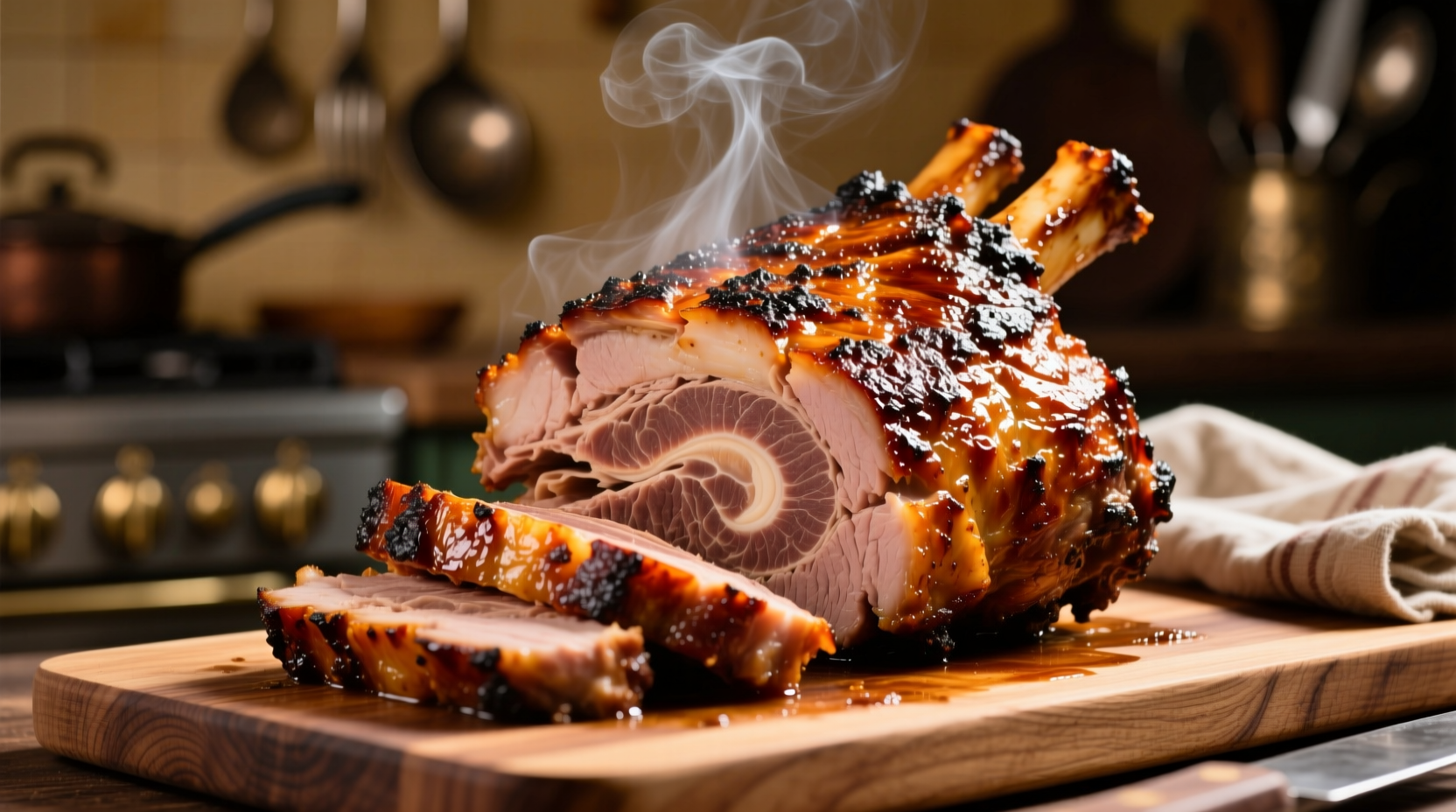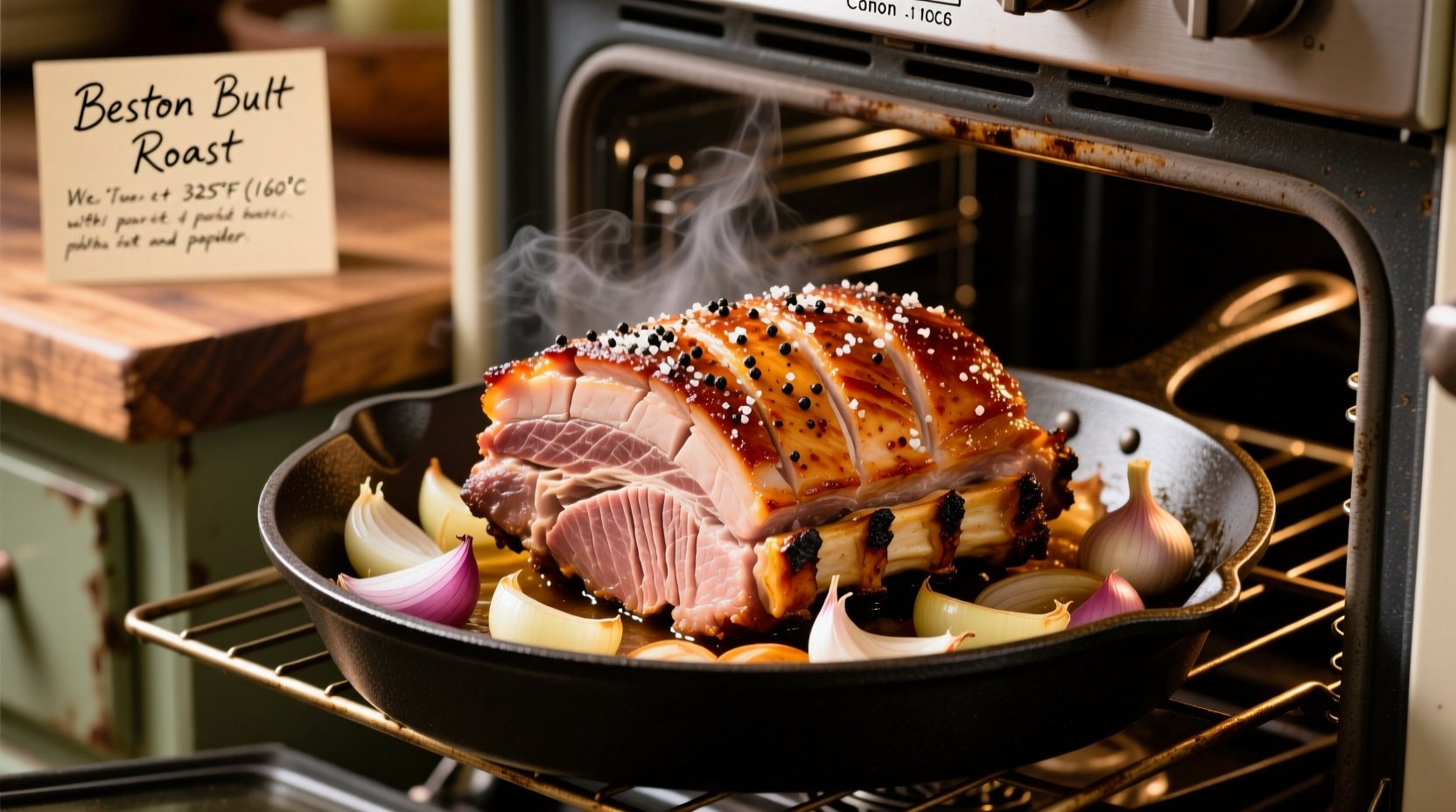Confused about cooking pork Boston butt in the oven? You're not alone. Despite its misleading name (it comes from the shoulder, not the rear), this marbled cut transforms into succulent pulled pork when cooked properly. As a chef who's prepared thousands of pounds of this versatile meat, I'll show you exactly how to master oven-roasted Boston butt with professional results.
Understanding Pork Boston Butt: More Than Just a Name
Boston butt, technically called picnic shoulder in some regions, contains abundant connective tissue that melts during slow cooking. This characteristic makes it perfect for oven roasting. Unlike leaner cuts, its fat marbling ensures moisture retention throughout the extended cooking process. The USDA Food Safety and Inspection Service confirms that proper slow roasting breaks down collagen while maintaining food safety standards (USDA FSIS).
Your Step-by-Step Oven Cooking Journey
Preparation: Setting Up for Success
Begin with a 6-8 pound bone-in Boston butt for optimal heat distribution. Trim excess external fat to about 1/4-inch thickness - this prevents flare-ups while providing necessary moisture. Apply a generous dry rub (3 tablespoons per pound) focusing on the fat cap side where flavors penetrate best. Let the meat rest uncovered in the refrigerator for 12-24 hours. This crucial step allows salt to penetrate deeply and forms a protective pellicle layer.
Cooking Process: The Low-and-Slow Method
Preheat your oven to 275°F - precise temperature control matters more than many realize. Place the roast fat-side up on a wire rack inside a roasting pan. Insert a probe thermometer into the thickest part, avoiding bone. Roast uncovered for the first 4 hours to develop flavor, then:
| Meat Weight | Uncovered Time | Total Cooking Time | Target Temperature |
|---|---|---|---|
| 4-5 lbs | 3-4 hours | 8-10 hours | 195-205°F |
| 6-8 lbs | 4-5 hours | 10-12 hours | 195-205°F |
| 9-10 lbs | 5-6 hours | 12-14 hours | 195-205°F |
After the initial uncovered phase, wrap tightly in foil when the internal temperature reaches 165°F. This "Texas crutch" technique accelerates the stall phase while preserving moisture. Continue roasting until the probe thermometer slides in with almost no resistance.
Resting and Pulling: The Critical Final Steps

Never skip the resting period! Transfer the wrapped roast to a cooler (without ice) for 2-4 hours. This allows juices to redistribute and fibers to relax. When pulling, work with two forks against the grain - you'll notice dramatic tenderness when properly cooked. Reserve 1 cup of cooking juices for moisture adjustment before serving.
Proven Timeline for Perfect Results
Understanding the cooking timeline prevents common mistakes. Here's what happens at each stage:
- 0-4 hours: Maillard reaction develops complex flavors and bark formation
- 4-6 hours: Temperature stall occurs as moisture evaporates (160-170°F)
- 6-10 hours: Collagen converts to gelatin, tenderizing the meat
- 10+ hours: Connective tissues fully dissolve, allowing easy pulling
When This Method Works Best (And Limitations)
This oven technique excels for home cooks without smokers, but has specific boundaries. It produces exceptional results for:
- Weekend cooking projects with 10+ hour availability
- Indoor cooking during inclement weather
- Smaller gatherings (under 20 people)
Consider alternative methods if you need:
- Quick weeknight meals (try slow cooker adaptation)
- Authentic smoke flavor (requires charcoal or wood smoker)
- Large catering quantities (commercial roasters work better)
Troubleshooting Common Issues
Dry meat? Usually caused by insufficient fat retention or premature unwrapping. Solution: Increase initial fat cap thickness and maintain foil wrapping until final temperature.
Tough texture? Indicates incomplete collagen breakdown. Solution: Continue cooking until 200°F internal temperature, even if past estimated time.
Bland flavor? Often from inadequate seasoning penetration. Solution: Apply rub 24 hours before cooking and include umami boosters like mushroom powder.
Perfect Pairings and Storage Tips
Serve with toasted brioche buns and classic vinegar-based coleslaw for balance. Leftover pork maintains quality for 4 days refrigerated or 3 months frozen. When reheating, use reserved juices rather than water to preserve flavor integrity. For next-day tacos, mix in a splash of apple cider vinegar before warming.











 浙公网安备
33010002000092号
浙公网安备
33010002000092号 浙B2-20120091-4
浙B2-20120091-4